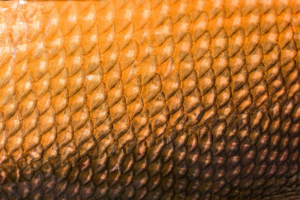19/07/2024
On 3 July, the Düsseldorf (DE) Local Division of the Unified Patent Court handed down the first UPC proceedings decision on merits, in an infringement action brought by Franz Kaldewei GmbH & Co. KG (“Kaldewei”) against Bette GmbH & Co. KG (“Bette”) based on European Patent No. 3 375 337. Bette filed a counterclaim for revocation.
As the UPC’s first complete decision on merits, this decision has naturally drawn a great deal of interest. The language of proceedings was German, the language in which the patent was granted, and so the decision is only available in German.
This UPC action follows an opposition filed by Bette against the German patent, DE 10 2017 105 290, from which EP’337 claims priority, which was maintained in amended form by the German Intellectual Property Office (DPMA).
It is an express goal of the UPC to serve SMEs, and so it is interesting that both parties in this dispute are medium-sized enterprises (albeit ones slightly too large to officially be considered SMEs).
Technology in dispute
EP’337 relates generally to bathroom fixtures. Claim 1 of the Patent relates to a sanitary-tray device (“Sanitärwanneneinrichtung”), such as a shower tray. The sanitary tray device of claim 1 as granted comprises a sanitary tray (“Sanitärwanne (1)”) and a support arrangement (“Traganordnung”) for the sanitary tray. A rim of the tray has a c-shaped cross section (“im Querschnitt C-förmigen Wannenrand (3)”) and a lower bent section (“Unterkantung (6)”). The support arrangement comprises multiple profiled strips (“mehrere Profilleisten (2)”), which are inserted into the C-shaped tray rim (3) and held interlockingly (“formschlüssig gehalten”).
The characterising portion recites that the profiled strips are formed of plastic rigid foam (“Kunststoff-Hartschaum“).

The Patent was amended during court proceedings to incorporate features of dependent claims 2 and 3, which define further features of the profiled strips (“Profilleisten (2)”), to overcome a lack of inventive step over prior art document DE 197 10 945 C1, which had not been considered by the EPO during examination. It is notable that the Court explicitly pointed out that the burden of proof regarding one of the prior art documents, KMG 10 (DE 199 61 255 A1), was higher (“höhere Vortragslast”) because KMG 10 was acknowledged in the Patent as prior art.

Claim construction – a sensible middle ground?
How patent claims are interpreted is a fundamental consideration in any validity and infringement action. Particularly, courts in different jurisdictions diverge on how much weight is accorded to the literal wording of a claim, and how much the description and drawings is taken into account for a contextual reading of the claims.
When the European Patent Convention was passed, a compromise between the two extremes was struck, with Article 69(1) EPC setting out that the extent of protection is determined by the claim, but that the description and drawings shall be used to interpret the claims.
Claim interpretation is a hot topic before the EPO, with a recent referral on the subject to the Enlarged Board of Appeal (G1/24). Some Boards of Appeal at the EPO argue that the description and drawings may generally be used to interpret the claims; others that the description and drawings should be consulted only in case of ambiguity, or only if claim language is unclear. As such, how the UPC would approach claim interpretation has been of great interest.
Claim construction in the present decision
The present decision appears to strike a reasonable middle ground between the two extremes on claim interpretation: the claims are taken to define the scope of protection, with reference being made repeatedly to the description to contextualise claim features.
The decision sets out explicitly that the understanding is supported by the description of the patent in suit (“Dieses Verständnis wird durch die Beschreibung des Streitpatents gestützt”). In some instances, the decision refers to specific portions of the description as setting out the meaning of a claim feature which is arguably clear without reference to the description. For example, regarding the profiled strips being held interlockingly (“formschlüssig gehalten”), the decision sets out that paragraph [0014] defines what the patent in suit understands this term to mean (“Aus Absatz [0014] ergibt sich, was das Streitpatent unter einer formschlüssigen Halterung versteht”).
- The decision seems to strike a middle ground on claim interpretation.
- In the interest of legal certainty, a consistent approach by the UPC is to be welcomed.
Infringing sale – evidencing sales in each member state in which the patent is being asserted
The Patentee/Claimant sought to assert the Patent in Austria, Belgium, Denmark, France, Italy, Luxembourg and the Netherlands. The Patentee appears not to have demonstrated evidence of infringement by sale or delivery in each of these member states. However, the decision sets out that the Patentee’s arguments were sufficient, at least because the Defendant did not explicitly deny delivery in the respective member states (“Auch wenn die Klägerin nicht für jeden hier beantragten Vertragsmitgliedstaat eine Lieferung dargelegt hat, genügt der klägerische Vortrag jedenfalls dann, wenn die Beklagte ihre Liefertätigkeiten nicht konkret bestreitet.“)
- Even without specific evidence of an infringing sale/delivery in each member state, without explicit denial, there may be a rebuttable presumption of such infringement.
Right to continue prior use
The Defendant tried to argue, based on prior use of the invention in Germany, that they had the right to continue such prior use. As set out in the decision, Article 28 UPCA is clear that the right to continue a prior use applies only in the member state in which the prior use occurred, based on respective national laws in that member state. Because infringement in Germany was not asserted by the Patentee, the court did not substantively consider the Defendant’s prior use defence.
- A right based on prior use of the invention extends only to the member state in which it arises, and not to other member states – there is no supranational right to continued prior use.
Order to communicate information and Remedies
Some of the technical legal matters decided by the court relate to orders to communicate information and to remedies.
Regarding orders to communicate information, the decision sets out that the Claimant has the right to request information in the infringement action, to put the Claimant in a position to confirm the accuracy of information provided (Art. 68(3)(a) and (b) UPCA), e.g. to establish infringement. Such a request may relate to the cost factors which the Defendant applies to their calculation of profits. According to Article 67(1) UPCA, the Claimant also has a right to request invoices, or delivery receipts.
Contrastingly, the decision sets out that a request for the laying open of books (Rule 141 RoPUPC) is part of the procedure for determination of damages and as such, not to be granted during the infringement action.
On remedies, the Court explicitly sets out that the right to definitively remove the products from the channels of commerce of Art. 64(2)(d) is a separate and independent right from the right to recall the infringing products from the channels of commerce of Art. 64(2)(b).
Recovery of Costs
Recovery of costs before the UPC has been of great interest to many practitioners as well as potential users, e.g. from the US. On costs, the decision sets out the Court’s finding that although Art. 69(2) UPCA, which relates to a partially successful action, does not explicitly mention a ceiling on cost recovery (unlike Art. 69(1) UPCA, which relates to a party being entirely successful in its claim), the cost recovery ceiling set by the UPC should apply equally to partially successful claims.
In the present case, because the patent as granted was found invalid, and the patent was maintained on the basis of amended claims, the costs regarding the counterclaim for revocation were set to be borne by the Claimant and Defendant equally (50% / 50%). As the Claimant partially withdrew its infringement claim regarding damages, recall and removal from the channels of commerce, the cost decision regarding the infringement action is that 15% of the costs are to be borne by the Claimant, and 85% are to be borne by the Defendant. In the present case, the value of the action was initially set at €500,000, and so the ceiling for recoverable costs for each action is €56,000.
- Cost ceilings apply equally to partially successful claims as they do to wholly successful/unsuccessful claims, limiting the risk of recoverable costs.
Summary
Although the UPC is at an early stage, so far, the UPC appears to be proving to be an attractive venue for enforcement actions. At least in this case, the UPC met the target timeline for issuing a written decision.
Our experts at Reddie & Grose will continue to monitor the early decisions by the UPC, to provide our clients up to date advice on the UPC.
This article is for general information only. Its content is not a statement of the law on any subject and does not constitute advice. Please contact Reddie & Grose LLP for advice before taking any action in reliance on it.




